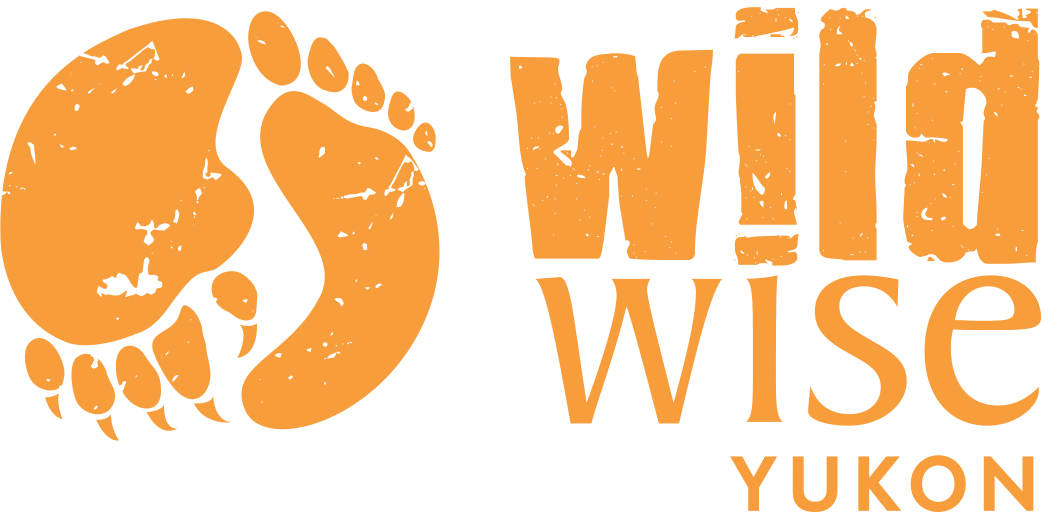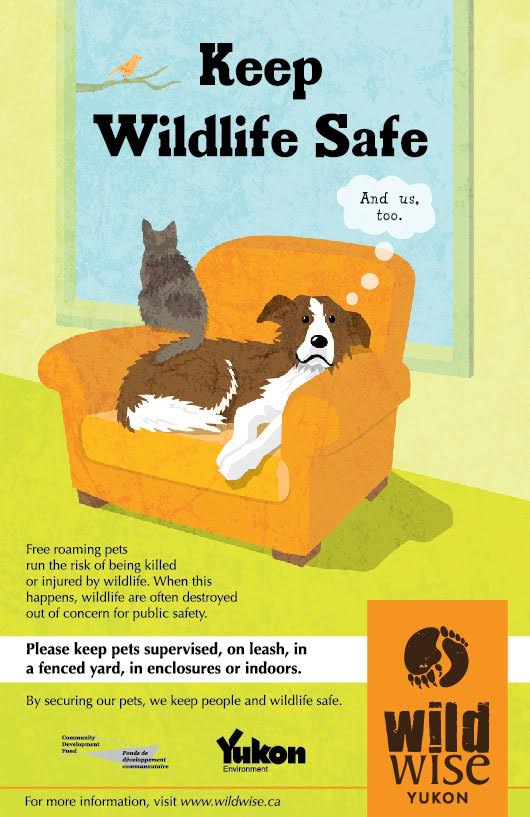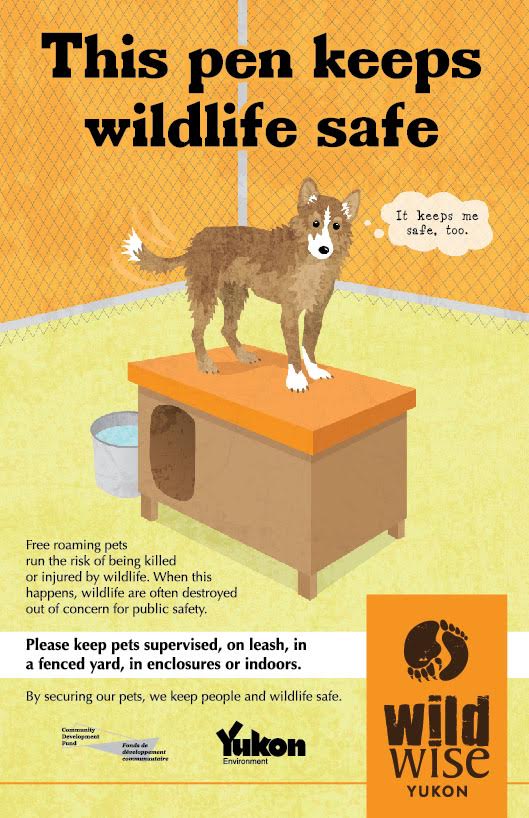Keeping pets safe at home
Every year pets are killed or injured by wolves, foxes, coyotes, bears and other wildlife. Every year, wildlife are unnecessarily destroyed when they come into our communities looking for food. Wolves eat dogs. Bears are attracted to feces, bones, pet food stored or left outside and can kill a dog instantly in self defense. Rodents like pet food, nest in straw bedding and become a real pest when they move in. Foxes and coyotes are excellent hunters and have a taste for kitties.
Here are some simple tips to keep your pets and wildlife safe:
- Feed pets inside and bring dogs in overnight. Most predation happens ‘after hours’.
- Build a pen for your dogs, with a cover to prevent harassment by birds of prey.
- Never let cats out of the house. This will help maintain healthy bird, rodent and small mammal populations, keep your cat alive much longer and make for better relationship with your neighbours.
- Store pet feed in a secure location. Inside your house is best.
- Keep an electric fence around kennel yards
- Clean up bones and feces regularly
Dogs in the backcountry
We are often asked about how to travel in the backcountry with dogs. Since you asked, the short answer is, you should not travel in the back country with dogs. They are not a natural part of the environment and they pose real challenges for wildlife. If you are in the back country it is unlikely that you will want to keep your dog on a leash. We like to keep our dogs happy, and that usually means letting them roam at large. Don’t fool yourself about your dog’s docile nature. Most dogs will chase, injure and even kill wildlife. They are protective of their people and will probably be on high alert in an unfamiliar environment. It is common for dogs to chase a bear in a circle back to its people, or on, down the trail towards other people, who are then in the path of a frantic bear. This is not good. As confident as you feel about how your dog will behave when faced with a bear, the most humane approach is to prevent that confrontation. Leave your dogs at home when you are travelling in the few remaining places that wildlife can live and travel safely.
Here is an article to emphasize our point. Note that letting dogs off leash is the second highest risk behavior provoking bear attacks in North America!
Other resources
- CBC article about causes of bear attacks in BC notes that more attacks are the result of off-leash dogs than bears protecting food resources.
- Coyotes and your pets
- Environment Yukon: Protecting pets and wildlife
- Why Dogs Belong on a Leash Outdoors – Op-Ed article highlighting safety issues for off-leash dogs and wildlife



